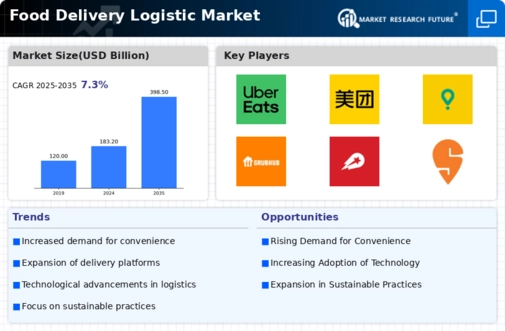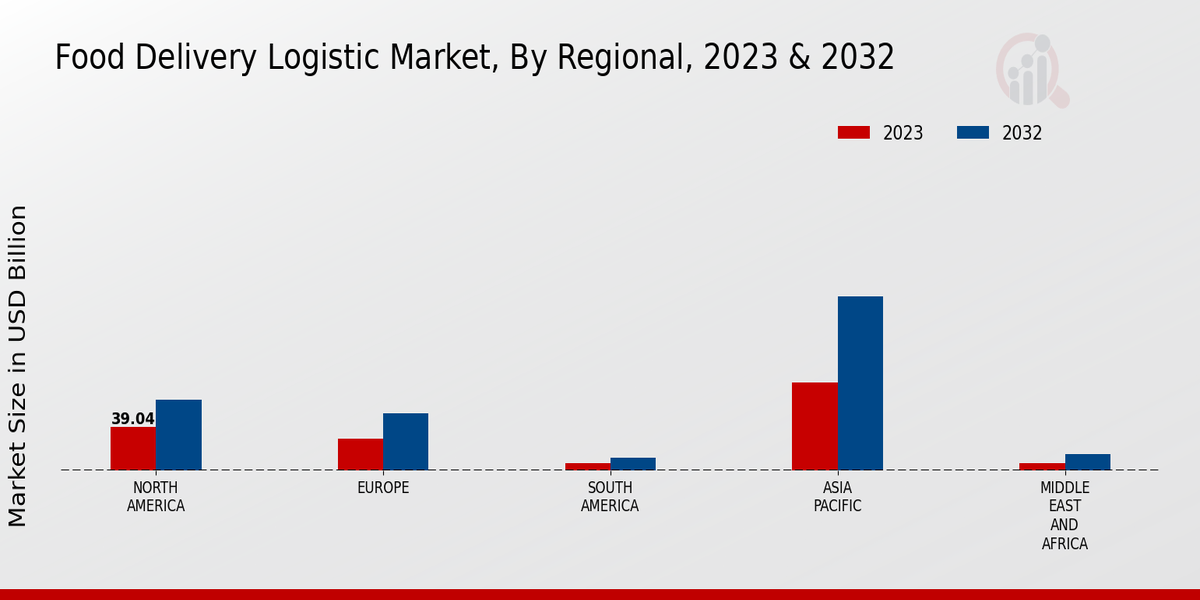Changing Consumer Preferences
Shifting consumer preferences towards diverse culinary experiences are reshaping the Global Food Delivery Logistic Market Industry. As consumers become more adventurous in their food choices, there is a growing demand for a variety of cuisines and meal options. This trend encourages food delivery services to diversify their offerings, catering to a broader audience. Additionally, the rise of health-conscious consumers has led to an increased demand for nutritious meal options, prompting delivery services to adapt their menus accordingly. This evolving landscape presents opportunities for growth and innovation within the industry.
Rising Demand for Convenience
The Global Food Delivery Logistic Market Industry experiences a notable surge in demand for convenience-driven services. Consumers increasingly prefer the ease of ordering food from their homes or workplaces, leading to a significant shift in dining habits. This trend is particularly pronounced among younger demographics, who prioritize quick and accessible meal options. As a result, the market is projected to reach 183.2 USD Billion in 2024, reflecting a growing reliance on delivery services. Companies are adapting by enhancing their logistics capabilities to meet this demand, indicating a robust growth trajectory for the industry.
Technological Advancements in Logistics
Technological innovations play a pivotal role in shaping the Global Food Delivery Logistic Market Industry. The integration of advanced technologies such as artificial intelligence, machine learning, and real-time tracking systems enhances operational efficiency and customer satisfaction. For instance, AI-driven algorithms optimize delivery routes, reducing transit times and costs. Furthermore, the adoption of mobile applications facilitates seamless ordering experiences for consumers. As these technologies continue to evolve, they are likely to drive market growth, contributing to an anticipated CAGR of 7.32% from 2025 to 2035, thereby transforming logistics operations.
Expansion of Online Food Delivery Platforms
The proliferation of online food delivery platforms significantly influences the Global Food Delivery Logistic Market Industry. Major players are expanding their service offerings, creating a competitive landscape that fosters innovation and efficiency. This expansion is evidenced by the increasing number of partnerships between restaurants and delivery services, enhancing accessibility for consumers. As more individuals embrace online ordering, the market is expected to grow substantially, potentially reaching 398.5 USD Billion by 2035. This trend underscores the importance of strategic collaborations in driving market dynamics and meeting evolving consumer preferences.
Sustainability Initiatives in Delivery Operations
Sustainability initiatives are becoming increasingly relevant in the Global Food Delivery Logistic Market Industry. As environmental concerns rise, consumers are more inclined to support businesses that prioritize eco-friendly practices. Delivery services are responding by implementing sustainable packaging solutions and optimizing delivery routes to reduce carbon footprints. This shift not only aligns with consumer values but also enhances brand loyalty. Companies that embrace sustainability are likely to gain a competitive edge, thereby influencing market dynamics and contributing to the overall growth of the industry.
























Leave a Comment